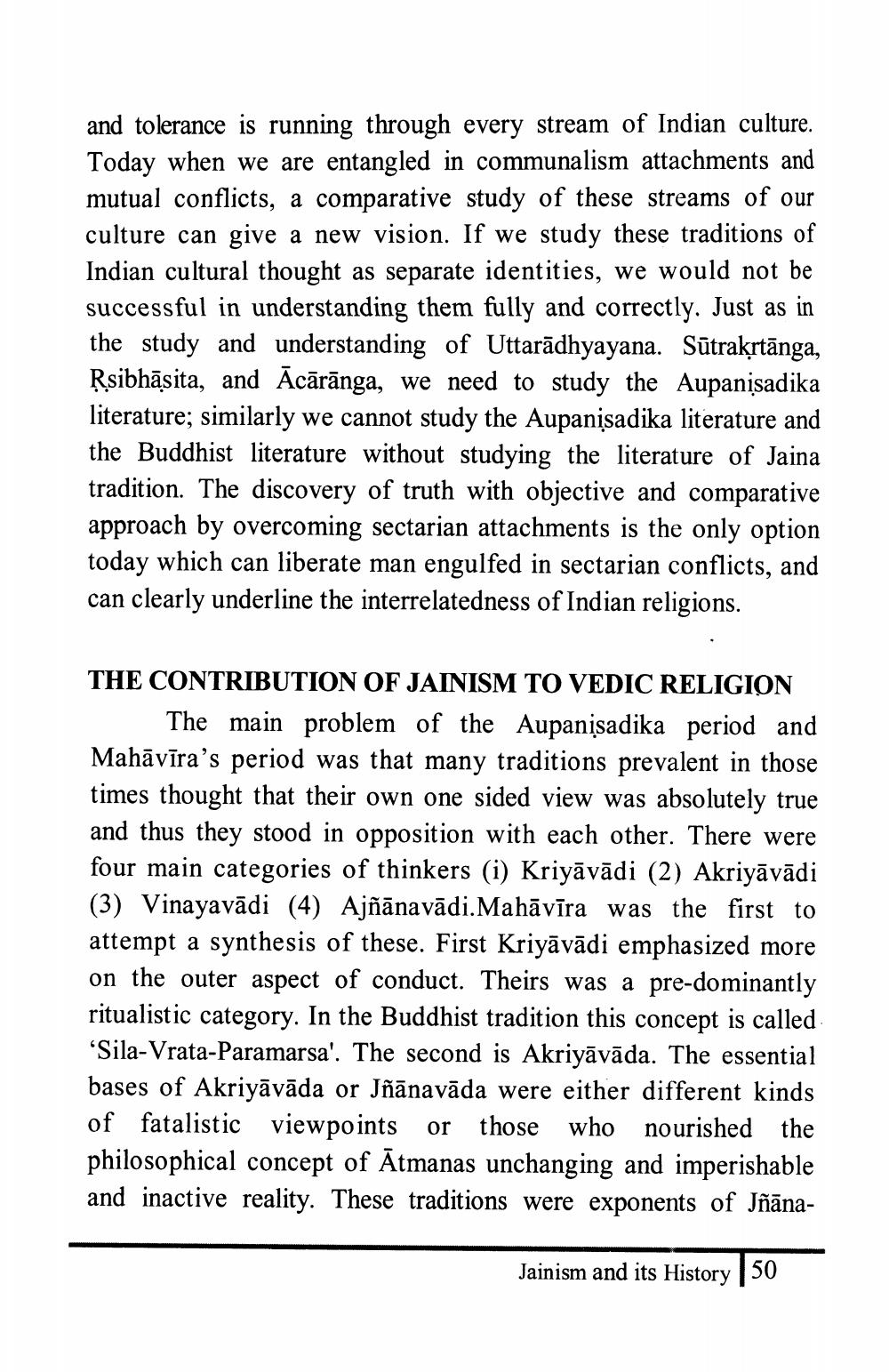________________
and tolerance is running through every stream of Indian culture. Today when we are entangled in communalism attachments and mutual conflicts, a comparative study of these streams of our culture can give a new vision. If we study these traditions of Indian cultural thought as separate identities, we would not be successful in understanding them fully and correctly. Just as in the study and understanding of Uttaradhyayana. Sūtrakṛtānga, Rsibhasita, and Acārānga, we need to study the Aupanisadika literature; similarly we cannot study the Aupanisadika literature and the Buddhist literature without studying the literature of Jaina tradition. The discovery of truth with objective and comparative approach by overcoming sectarian attachments is the only option today which can liberate man engulfed in sectarian conflicts, and can clearly underline the interrelatedness of Indian religions.
THE CONTRIBUTION OF JAINISM TO VEDIC RELIGION The main problem of the Aupanisadika period and Mahāvīra's period was that many traditions prevalent in those times thought that their own one sided view was absolutely true and thus they stood in opposition with each other. There were four main categories of thinkers (i) Kriyāvādi (2) Akriyāvādi (3) Vinayavādi (4) Ajñānavādi.Mahāvīra was the first to attempt a synthesis of these. First Kriyāvādi emphasized more on the outer aspect of conduct. Theirs was a pre-dominantly ritualistic category. In the Buddhist tradition this concept is called 'Sila-Vrata-Paramarsa'. The second is Akriyāvāda. The essential bases of Akriyāvāda or Jñānavāda were either different kinds of fatalistic viewpoints or those who nourished the philosophical concept of Atmanas unchanging and imperishable and inactive reality. These traditions were exponents of Jñāna
Jainism and its History 50




